Fix the Windows 11 Blue Screen of Death with These 7 Tips!

If you are using Windows 11, you might have encountered the dreaded Blue Screen of Death (BSOD) at some point. Windows 11 Blue screen errors usually occur when the operating system encounters a critical error that it can’t recover from, forcing the entire system to come to a sudden stop. Common culprits include hardware issues, faulty drivers, or problems with system files. The BSOD can be very frustrating and scary, especially if you don’t know how to fix it. In this article, we will explain what causes the blue screen error on Windows 11 and how you can troubleshoot it with few simple tips.
What Causes Blue Screen Error windows 11?
The blue screen error on Windows 11 can be triggered by various factors, such as hardware problems, software conflicts, driver issues, corrupted system files, malware infections, or overheating. Sometimes, the error message will give you a clue about the cause, such as “IRQL_NOT_LESS_OR_EQUAL” or “CRITICAL_PROCESS_DIED”. Other times, you might see a generic message like “Your PC ran into a problem and needs to restart”.
To find out more details about the error, you can check the memory dump file that Windows 11 creates when it crashes. This file contains information about the state of your system at the time of the crash and can help you identify the culprit.
You can access the memory dump file by going to Settings > System > Advanced system settings > Startup and Recovery > Settings > Write debugging information > Small memory dump.
Here are some common reasons behind Windows 11 blue screen errors:
- Incompatible or outdated drivers can lead to conflicts, causing the system to crash.
- Faulty hardware components, such as RAM, hard drives, or graphics cards, can trigger blue screen errors.
- Incompatibility or conflicts between different software applications or system processes can result in BSoD. This includes third-party applications, antivirus programs, or even Windows updates.
- Malicious software can compromise system stability and lead to blue screen errors.
- Damage to critical system files can occur due to various reasons, including unexpected shutdowns, hardware failures, or software issues.
- Problems with system memory, such as faulty RAM modules or incorrect memory configurations, can lead to BSoD errors.
Depending on the cause of the error, there are different ways to fix the blue screen error on Windows 11. Here are some common solutions that you can try:
Update Windows PC
Regular updates not only bring new features but also address security vulnerabilities and system stability. Blue screen errors can often be caused by outdated system files that are patched through updates.
- Open Settings (Windows key + I) and navigate Windows update
- Hit check for updates, if new updates are available, allow them to download and install,
- Once done, you need to reboot your computer to apply the changes.
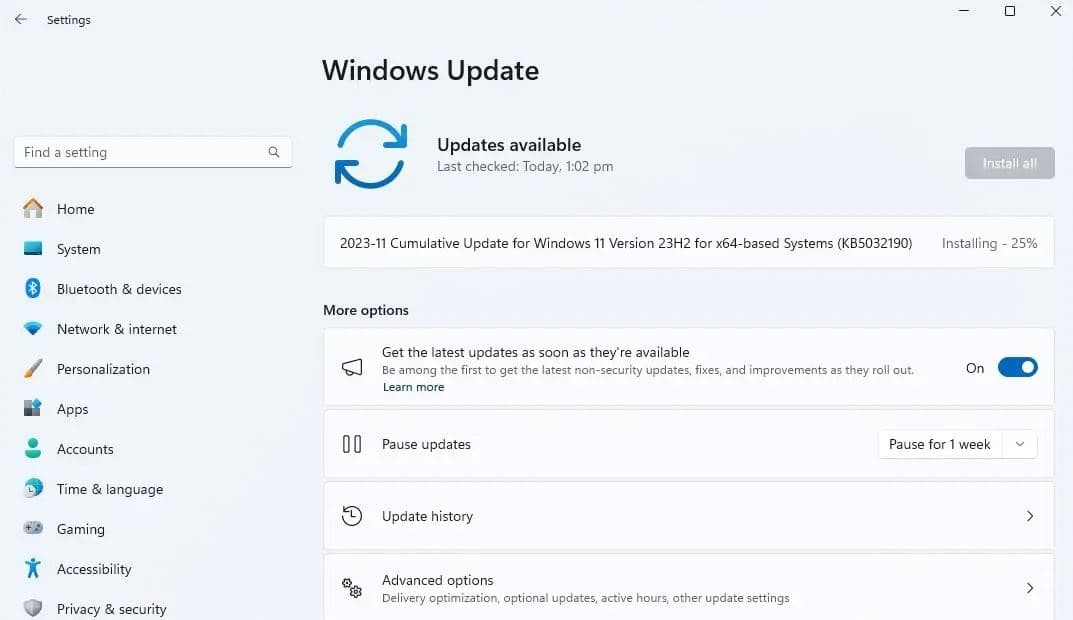
Update Device Drivers
Drivers are software components that allow your hardware devices to communicate with your operating system. If a driver is faulty, outdated, or incompatible with Windows 11, it can cause system instability and crashes.
Outdated or incompatible drivers can cause system instability leading to blue screen errors.
To update your device drivers, you can use the Device Manager tool in Windows 11.
- Right-click on the Start button and select Device Manager.
- Then, expand the categories of devices and look for any yellow exclamation marks or red crosses that indicate a problem.
- Right-click on the problematic device and select Update driver.
- Then, choose Search automatically for drivers and follow the instructions.
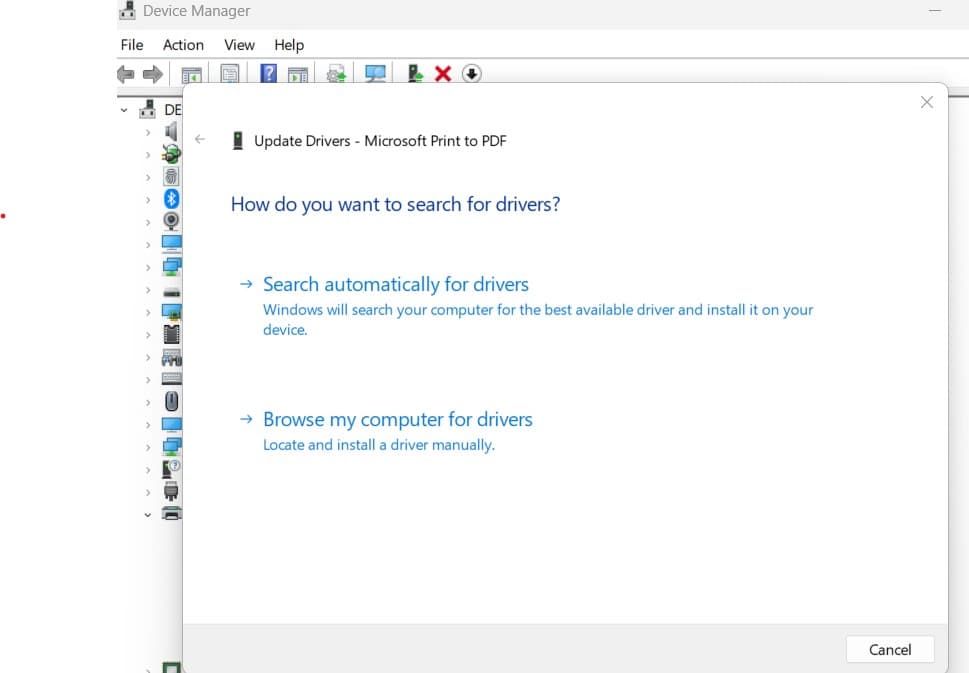
Alternatively, you can also visit the manufacturer’s website of your device and download the latest driver manually.
Also, you can use third-party driver update tools to make the process automatically.
Check for Hardware Issues
Another possible cause of a BSOD is a hardware malfunction or failure. This can happen due to overheating, dust accumulation, physical damage, or faulty components. To check for hardware issues, you can use the Windows Memory Diagnostic tool in Windows 11. This tool can scan your RAM for errors and suggest possible solutions.
- To access it, type “memory” in the search box on the taskbar and select Windows Memory Diagnostic.
- Then, choose Restart now and check for problems (recommended).
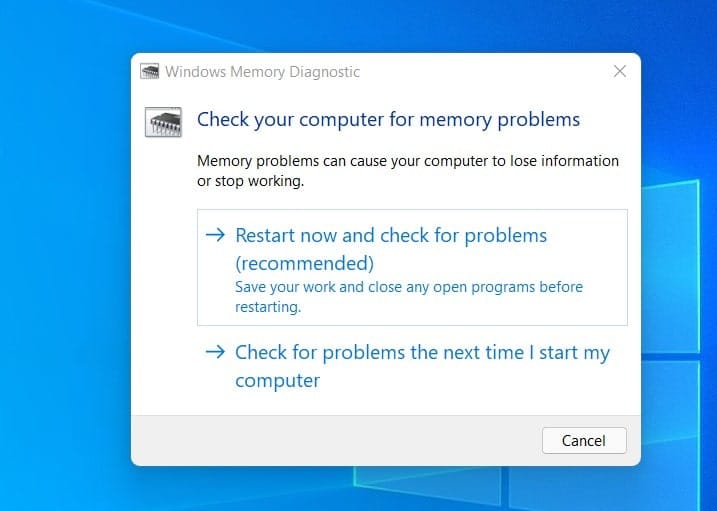
- Your PC will reboot and run the test.
- After the test is completed, you will see the results on your screen.
- If there are any errors, you may need to replace your RAM or contact a professional for assistance.
In addition, Use the built-in disk checking tool by opening a Command Prompt as an administrator and typing chkdsk /f then press Enter. This checks for and fixes disk errors.
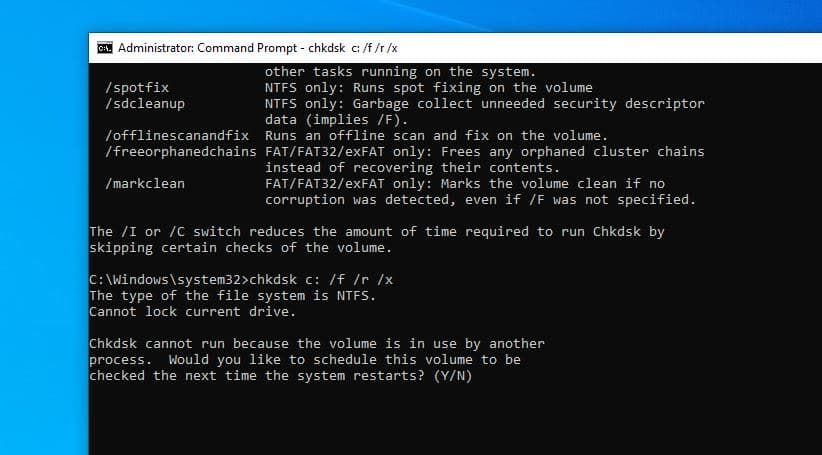
Scan for Malware
Malware is malicious software that can infect your PC and cause various problems, including BSODs. Malware can corrupt your system files, modify your registry settings, steal your personal data, or install unwanted programs on your PC.
Regular virus/malware scann help ensure the security and health of your system.
To scan for malware, you can use the Windows Security app in Windows 11. This app can detect and remove various types of malware using real-time protection and periodic scans.
- To access it, type “security” in the search box on the taskbar and select Windows Security.
- Then, click on Virus & threat protection and select Scan options, choose Full scan and click on Scan now.
- The scan may take some time depending on the size of your files and folders.
- After the scan is completed, you will see the results on your screen. If there are any threats found, you can click on Clean threats to remove them.
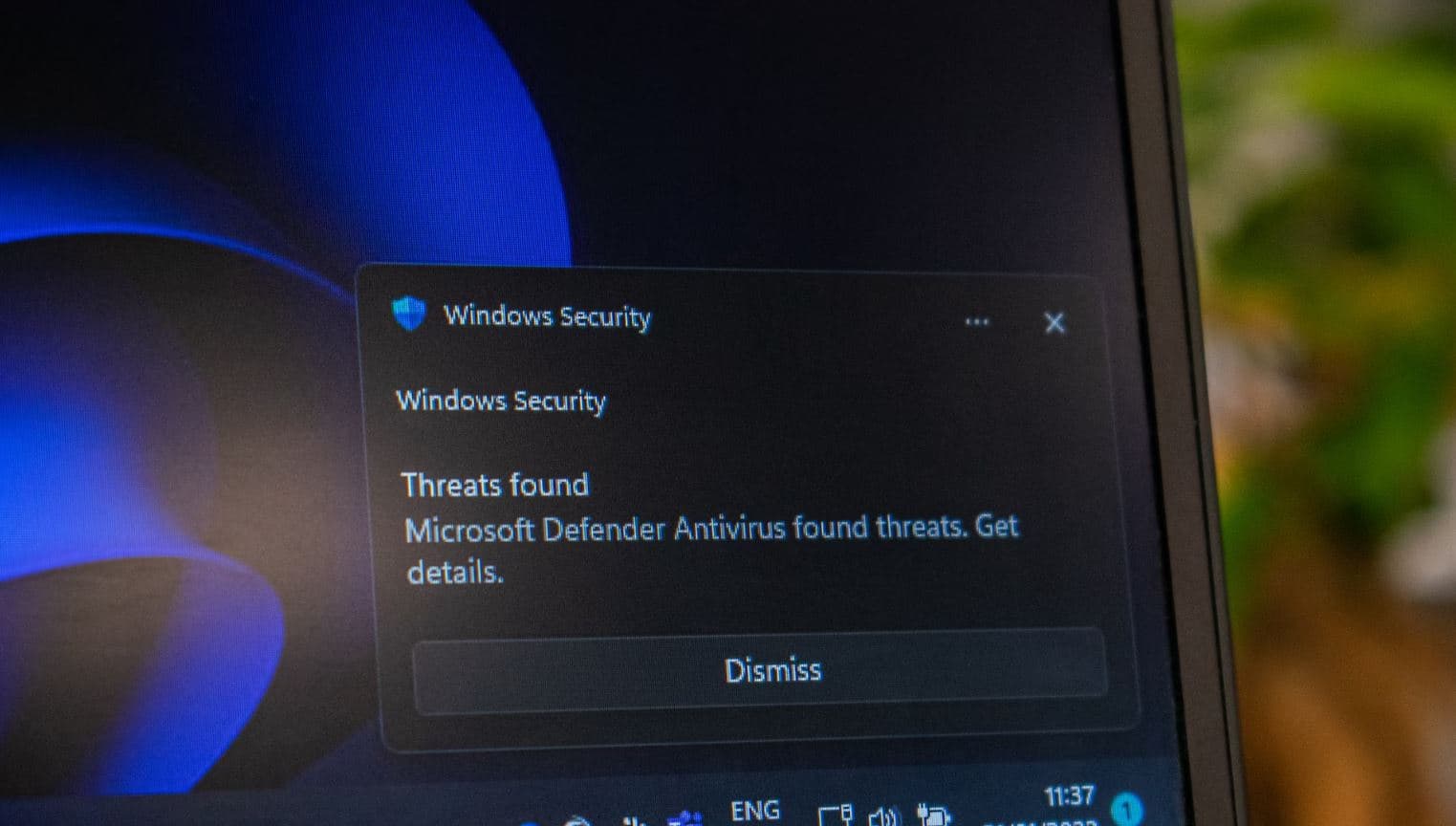
Also, you can use a third-party antivirus program to scan and remove any malicious software or programs.
Address System File Corruption
System files are essential files that are required for the proper functioning of your operating system. If these files are corrupted or missing, it can cause various errors and crashes, including BSODs. To address system file corruption, you can use the System File Checker (SFC) tool in Windows 11. This tool can scan your system files and repair any corrupted or missing ones automatically.
- Open Command Prompt as an administrator.
- Then, type “sfc /scannow” (without quotes) and press Enter.
- The scan may take some time depending on the size of your system files.
- After the scan is completed, you will see the results on your screen.
- If there are any corrupted files found and repaired, you may need to restart your PC for the changes to take effect.
Additionally, run the DISM command for a more comprehensive repair:
DISM /Online /Cleanup-Image /RestoreHealth
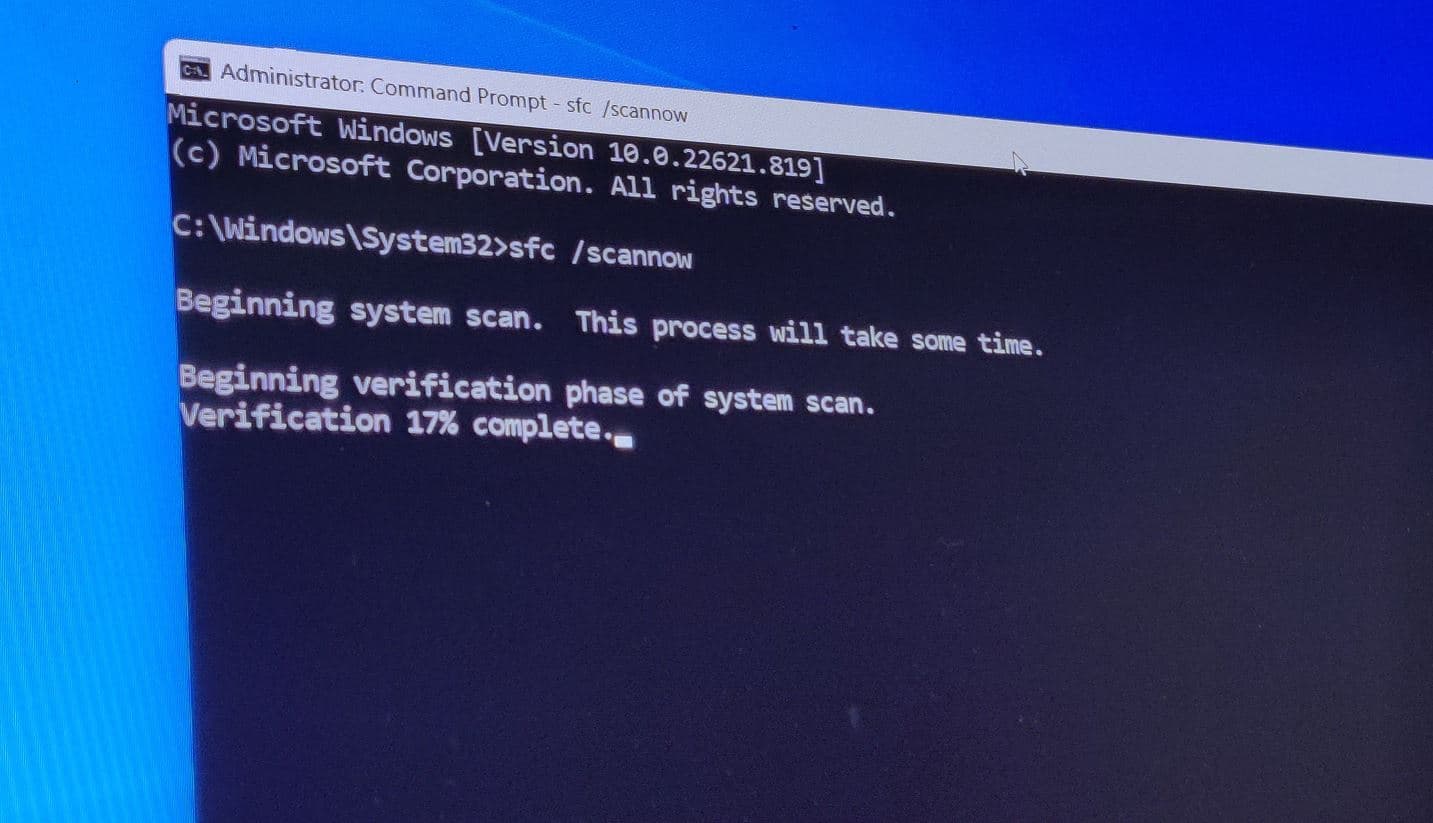
The DISM command checks the Windows image for corruption and attempts to fix it using Windows Update. Ensure that your computer is connected to the internet when running this command.
Review Recent Software Changes
Sometimes, a Blue screen of death on Windows 11 can be triggered by a recent software change on your PC. This can happen due to a software update, installation, uninstallation, or configuration that is incompatible or conflicting with your operating system or other programs. To review recent software changes, you can use the Programs and Features tool in Windows 11. This tool can show you a list of all the programs installed on your PC and their installation dates.
- To access it, type “programs” in the search box on the taskbar and select Programs and Features.
- Then, sort the list by Date Installed and look for any programs that were installed or updated around the time when you started experiencing BSODs.
- If you find any suspicious or unnecessary programs, you can right-click on them and select Uninstall to remove them from your PC.
If the BSoD started after a recent update, uninstall it. Go to “Settings” > “Windows Update” > “Update history” > “Uninstall updates.”
You can uninstall programs from Settings > Apps > Installed apps or use a dedicated uninstaller tool.
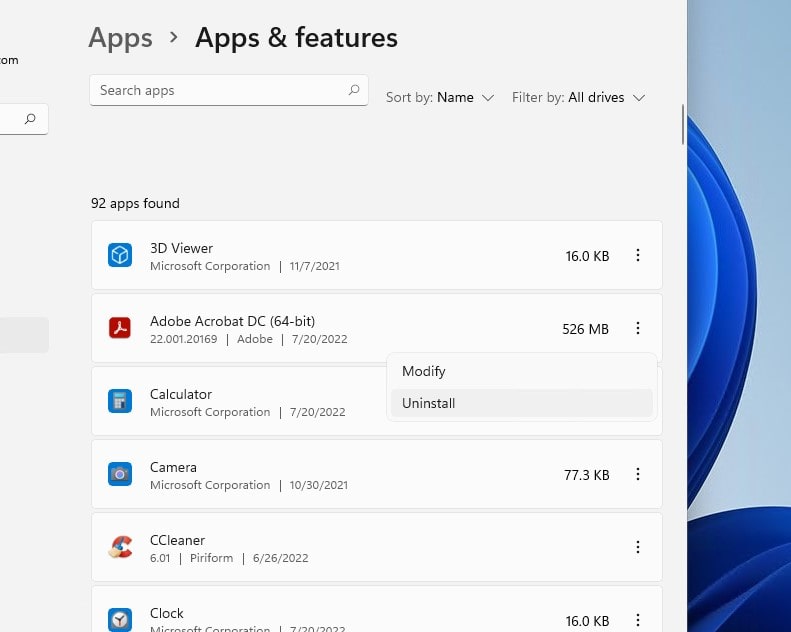
Restore your system to a previous point
If none of the above steps work, you may need to restore your system to a previous point when it was working fine. This can undo any changes that may have caused the BSODs without affecting your personal files and data. To restore your system to a previous point, you can use the System Restore tool in Windows 11. This tool can create restore points automatically or manually that contain snapshots of your system settings and configuration at a certain point in time.
- Open the Control Panel and go to “Recovery.”
- Click on “Open System Restore” and follow the on-screen instructions to choose a restore point from a time when your system was stable.
- Confirm the restoration process and allow your system to revert to the selected state.
If the blue screen errors persist or if you want a more comprehensive reset, consider using the “Reset this PC” option.
- Navigate to Settings by pressing the Windows key + I.
- Go to “System” > “Recovery.”
- Under “Reset this PC,” click “Reset PC.”
- Choose between “Keep my files” or “Remove everything,” depending on your preference.
- Follow the on-screen instructions to complete the reset process.
- Note: “Keep my files” preserves your personal files but removes apps and settings. “Remove everything” removes all personal files, apps, and settings.
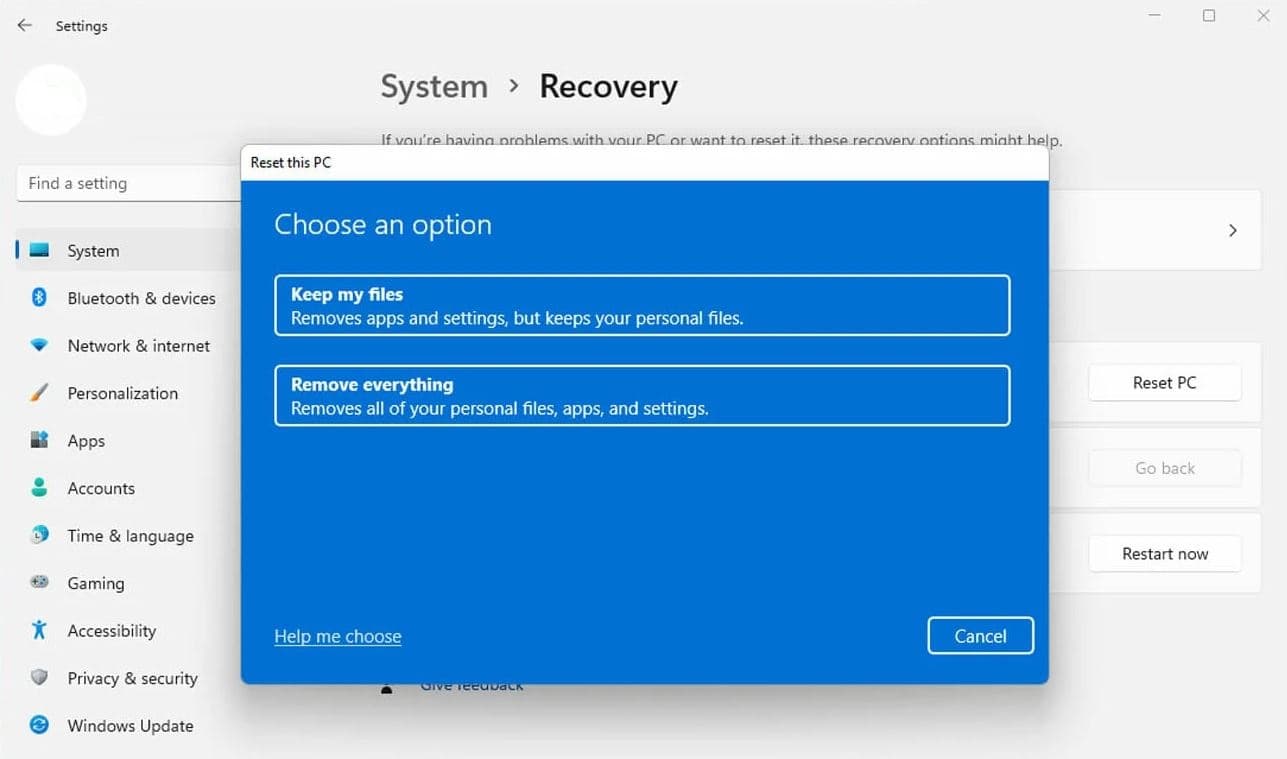
If all else fails, you can contact Microsoft support for further assistance. They might be able to diagnose the problem and provide you with a solution or a patch. You can contact Microsoft support by phone, chat, or email from their website.
If you’re still having trouble, Microsoft has a troubleshooting guide as well.
